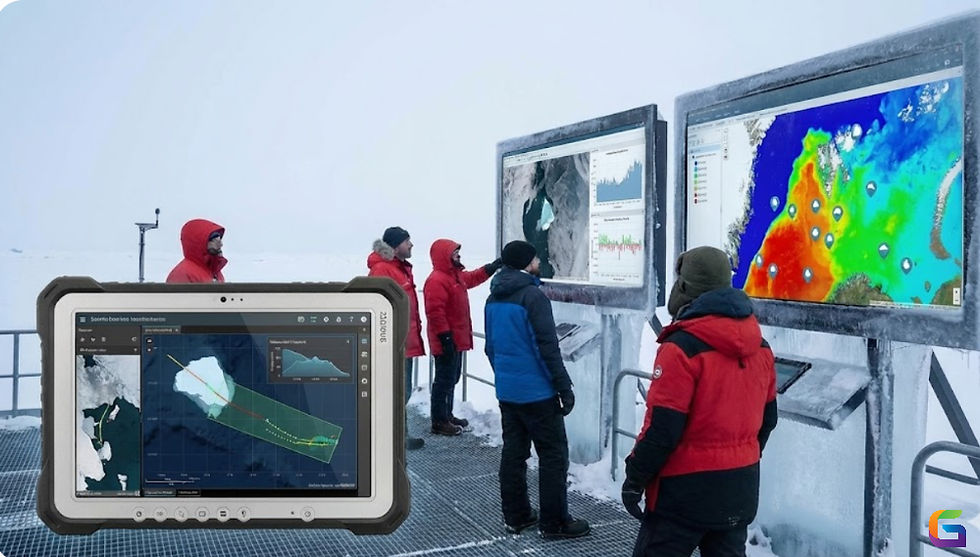Geospatial Machine Learning Workflows in Databricks
- Howard Krinitzsky

- Jun 23
- 2 min read
As the volume of geospatial data increases exponentially, the need for scalable and efficient machine learning workflows in distributed environments becomes essential. Databricks, with its unified analytics platform and built-in support for big data processing, has emerged as a powerful tool for developing, training, and deploying geospatial machine learning (GeoML) models.

Why Geospatial ML Needs Scalable Infrastructure
When working with high-resolution remote sensing, telemetry, or Internet of Things datasets, traditional GIS tools frequently fail. Workloads requiring geospatial machine learning are intrinsically data- and compute-intensive and include:
Ingestion of raster/vector data at the petabyte scale
Indexing, tiling, and spatial joins
Engineering features across space-time grids
Training models with spatial autocorrelation-aware techniques
Real-time and batch inference across dispersed spatial domains
These issues are resolved by Databricks using Delta Lake storage, parallelized computation (Spark), and smooth machine learning integration.
Core Components of a Geospatial ML Workflow in Databricks
1. Preprocessing and Data Ingestion
Databricks supports scalable geospatial format ingestion and includes:
Shapefiles, GeoJSON, and KML (via GDAL or GeoMesa)
Raster data (using Xarray-PySpark or RasterFrames for GeoTIFF, HDF5, and NetCDF)
Data streaming from IoT sensors and Kafka (with spatial-temporal keys)
Data can be spatially indexed and partitioned using Apache Sedona (formerly known as GeoSpark) or H3. Through partition pruning, Delta Lake facilitates effective spatial querying and ACID transactions.
2. Engineering Spatial Features
One way to incorporate spatial context is by using:
Satellite imagery's NDVI and SAVI (using RasterFrames)
Features based on proximity using spatial joins
Aggregations based on the H3 hex
Utilizing sliding window functions for temporal aggregations
3. Experimentation and Model Training
Models can be trained at scale with Databricks Runtime ML by using:
For scalable pipelines, Spark MLlib
HorovodRunner, LightGBM, and XGBoost
For deep spatial models, such as CNNs on tiles, TensorFlow/PyTorch
4. Model Assessment Using Spatial Measures
The i.i.d. premise is broken by spatial autocorrelation. Apply validation that is spatially aware:
Block cross-validation (test tiles that are not adjacent)
Geary's C and Moran's I for testing spatial residuals
Visual examination using confusion matrices over map tiles or heatmaps
5. Inference in Batch and Real-Time
Apply models across wide geographic areas using Databricks:
Using transform() to score Delta tables in batches
Inference streaming from IoT or UAV data
Real-time serving with Databricks Model Serving + REST APIs
Advanced Use Cases
Using thermal images to detect urban heat islands
Monitoring deforestation with temporal NDVI change
Predicting traffic accidents with point-in-polygon joins.
Estimating soil moisture using combined sensor and satellite data
Best Practices for Geospatial ML on Databricks
Optimize spatial reads by using the Delta Lake ZORDER BY H3 index.
To prevent recomputation, cache intermediate tiles and features.
Use Databricks Jobs + Notebooks to automate processes.
Track model drift using MLflow Data versioning and the Model Registry
A production-grade, scalable platform for creating geospatial machine learning processes is offered by Databricks. It enables data scientists and spatial analysts to transcend conventional GIS silos and advance toward real-time, AI-powered geospatial intelligence with native support for Spark, Sedona, RasterFrames, MLflow, and deep learning libraries.
For more information or any questions regarding geospatial machine learning, please don't hesitate to contact us at
Email: info@geowgs84.com
USA (HQ): (720) 702–4849
(A GeoWGS84 Corp Company)




Comments